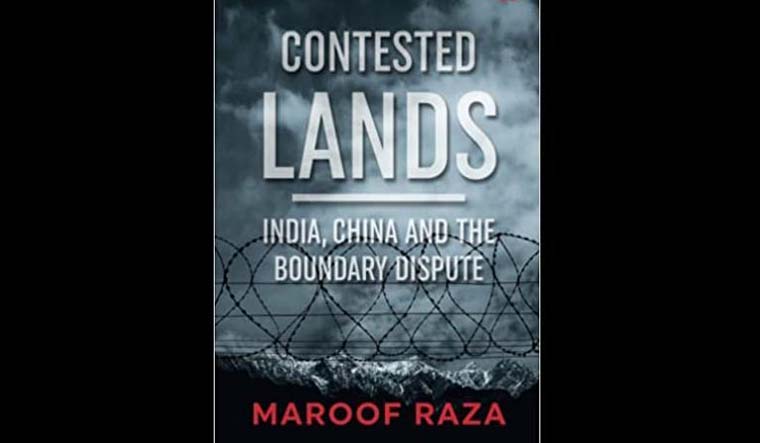Addressing the several questions that have followed the Chinese intrusions in Ladakh in April 2020, and the unresolved standoff that continues, military and strategic affairs commentator Maroof Raza’s latest offering, aptly titled ‘Contested Lands’, has all the details of how their differing boundary claims are the basis of Sino-Indian boundary disputes. The hallmark of Maroof’s books is his depth of research and his ability to put across facts in a logical manner by connecting all the dots and looking at issues from a different perspective.
The differing claims of India and China over Aksai Chin, explains the author, are the outcome of earlier military expeditions and surveys in the eastern reaches of Ladakh, driven by the ambitions of Maharajas and the British Empires strategic consideration of keeping Russia away. This led to three sets of lines drawn by the British in the north namely the Johnson Line in 1865, the Johnson-Ardgah Line in 1897 and the McCartney MacDonald Line in 1899 – that are the basis of disagreements even now.
And, it was the British desire to define the boundaries of Tibet with China and India at the Simla conference(s) of 1913-14, that led to the McMahon Line, and is the basis of India’s claims over the Arunachal front in India’s northeast. How this came to be, after extensive negotiations with the Tibetan and a reluctant Chinese representative, have been wonderfully covered, in this book. And how eventually the conveners of the Simla conference, Sir Henry McMahon, fearing a collapse of the talks, with much ceremony, drew the line with a thick-nib marker on a small scale map, to define what became known as the McMahon Line, on which India’s claims from east Bhutan to north Myanmar. China hasn’t quite accepted it yet!
And these are two key issues on which the Sino-Indian disputes are based. This led eventually to the Sino-Indian conflict of 1962, and the author goes into all the strategic errors that were made; from ignoring the Chinese buildup in Aksai Chin – that an army patrol reported in 1952 to the air photographs by a bold IAF pilot – and then the select band of sycophants that Pandit Jawaharlal Nehru and Krishna Menon chose to guide their one-sided assessments of the Chinese intent, this book has riveting details of that Himalayan conflict, where Indian Army were ill-led and not allowed to fight, for fear of angering the Chinese further! And it was for this reason that India’s air force wasn’t used either, despite the IAF being well positioned to alter the course of the war, that Raza calls only a conflict. More troops were used in the Kargil conflict, than in the ‘1962 war’, says the author, which was the result of Delhi blunders, not only of India’s generals.
No wonder the Henderson Brooks report remains classified, even though its findings have been greatly implemented, as the author explains by looking at incidents at Nathu La and Jelep La of 1967 and the contrasting approaches by the army’s commanders in Sikkim. Then the next time India responded was in 1986-87 at Sumdrong Chu when General Sunderji quickly mobilised forces at the McMahon Line, following Chinese intrusions. This led to China’s leaders developing new respect for India, and the invitations to PMs starting with Rajiv Gandhi, then Narasimha Rao and A.B. Vajpayee. This led the Border Peace and Tranquility Agreement in 1993 and an agreement to avoid the use of force even though the Chinese transgressions have not ceased as we witnessed in 2020. The brutal fighting in the Galwan valley that followed had shown that the India of 2020 was not the India of 1962.
Could another Himalayan conflict follow if tensions spiral out of control and how things could then pan out between the two Asian giants? This book offers answers. It will surely be among the most valued books on the subject and its attendant complexities.
Book: Contested Lands: India, China and the boundary dispute
Author: Maroof Raza
Pages: 208
Publisher: Westland
Price: Rs 699



